Dojo
Boosting a product-centric design approach to support growth into new markets
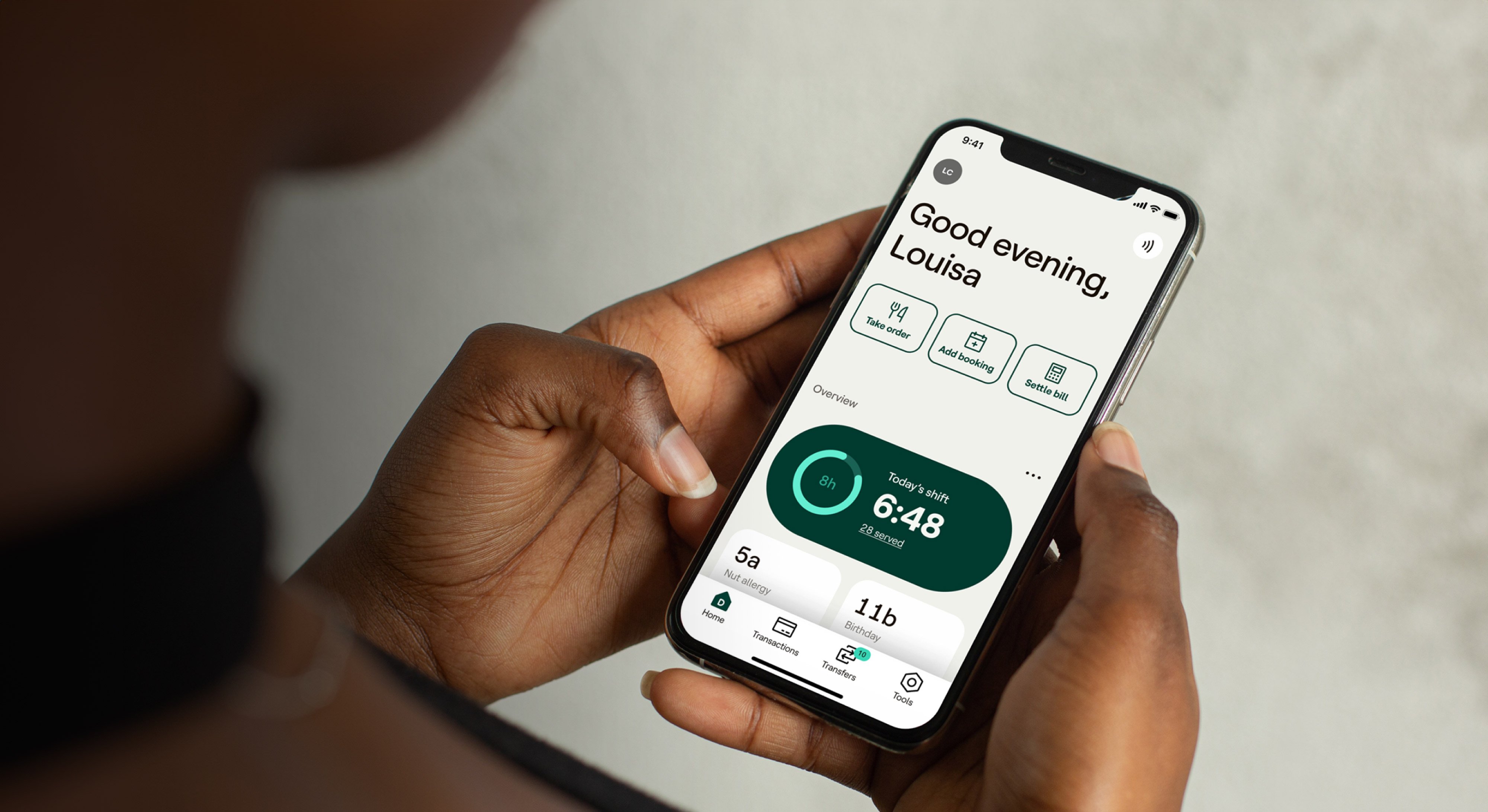
The UK-based tech company Dojo was in an exciting phase when ustwo came on board to boost their product design capability.
The company, which had extraordinary success in payment solutions for small and medium-sized enterprises, was scaling for rapid growth and moving into new international markets.
Dojo wanted to bring in director-level design and product roles, and they needed to set teams up in the interim with a re-focus on product and user-centric design approach. They also needed additional design capability to support squads and a wider rebrand.
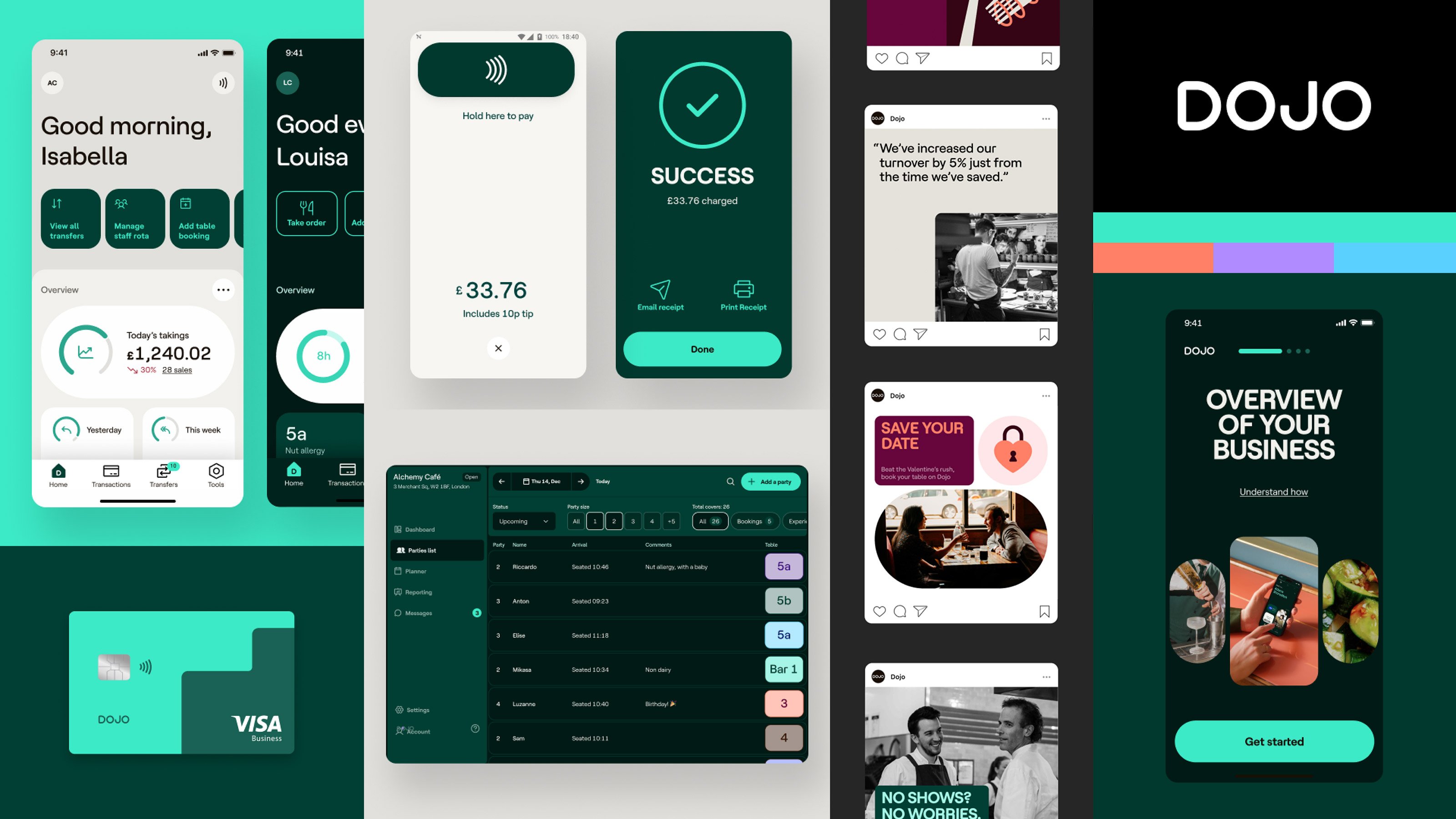
So we rolled up our sleeves and embedded a ten-person design and product team into Dojo, including VP leadership in these areas, for a six-month boost. Our work comprised three main areas: capability building, enabling a rebrand and a design system. We tackled projects alongside Dojo designers while coaching teams and helping reset ways of working, team dynamics and the approach to design.
By the time we offboarded, we’d helped reposition design as a strategic practice and business priority, setting up a solid foundation for future design and product success through its first global design system and a rollout of a new brand identity.
We left the team in good hands by supporting their first hire for a Product Design director and other high-level roles and contributed to a more efficient, integrated, skilled and happy product design team. These changes will ultimately help Dojo bring products to market more quickly as the company scales with an expanded user range.
Our design capability is several levels above where we were when we started with ustwo. They’ve set us up for success in the future.
Capability building and shaping a team
We’re more aligned, more organised, more focussed.
The six-month project kicked off in September 2023. ustwo placed an interim VP of Design from within our ranks – a new role at Dojo – and an interim VP of Product to serve as leadership throughout the project’s run and build a foundation for their future counterparts. In these roles, they successfully advocated for investment in design, including the rebrand and a new internal design system, stressing its importance for expanding into other markets.
At the start of our rapid immersion into Dojo, we ran capability assessments and created a plan for how to level up both practices. We analysed the design squad setup and noted where the gaps were, sprinkling eight ustwo-placed product designers across the teams to pair up with Dojo designers. Embedded within the teams, they were able to share knowledge while working side-by-side with their Dojo counterparts.
For instance, this led us to bring in a designer with a strong background in accessibility. We upskilled the capability of building accessible products through workshops that build empathy and understanding for a range of accessibility needs and training, as well as adding accessibility standards – which are being codified in Europe through the Consumer Act – to the definition of ready/done for squads.
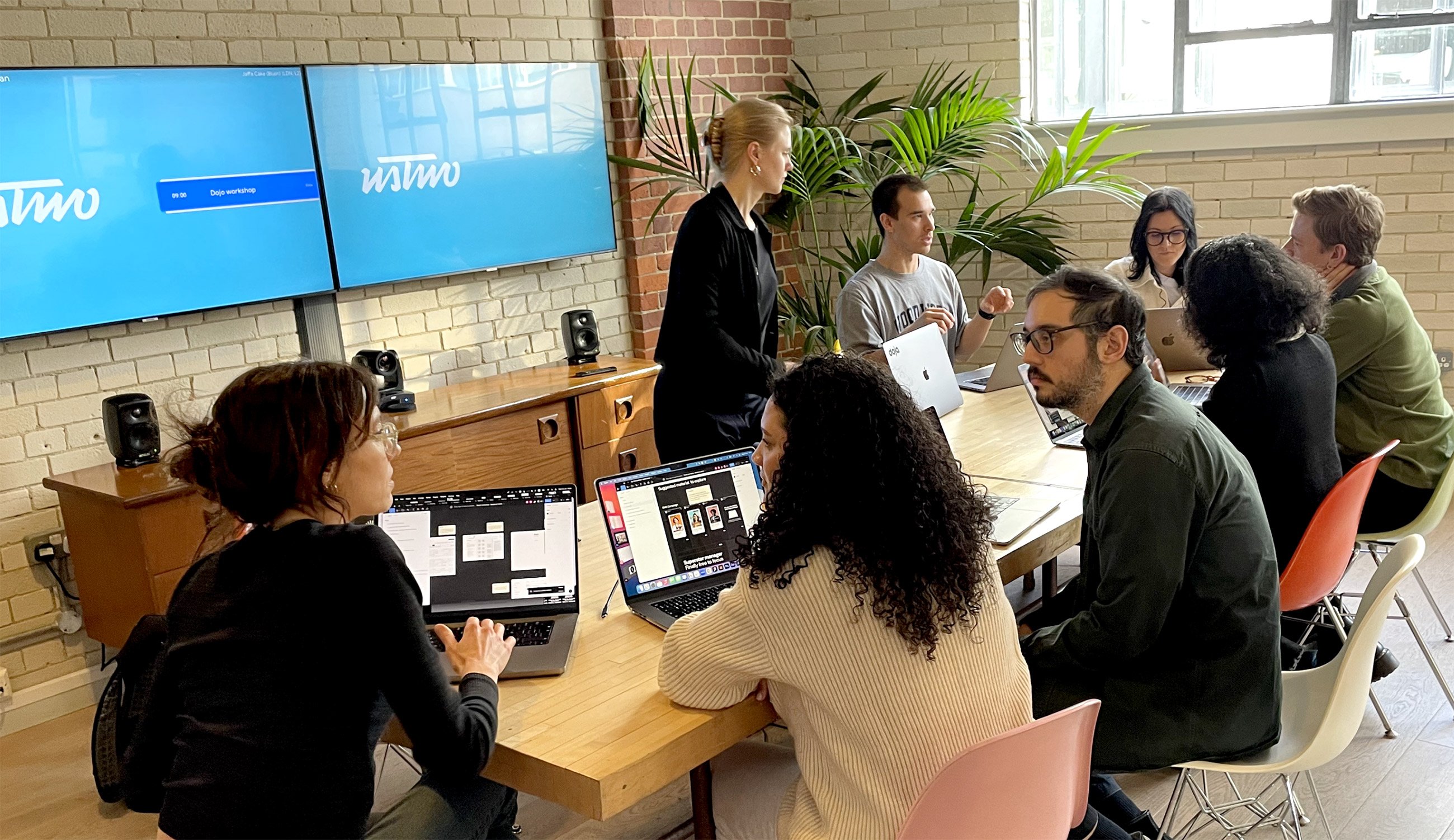
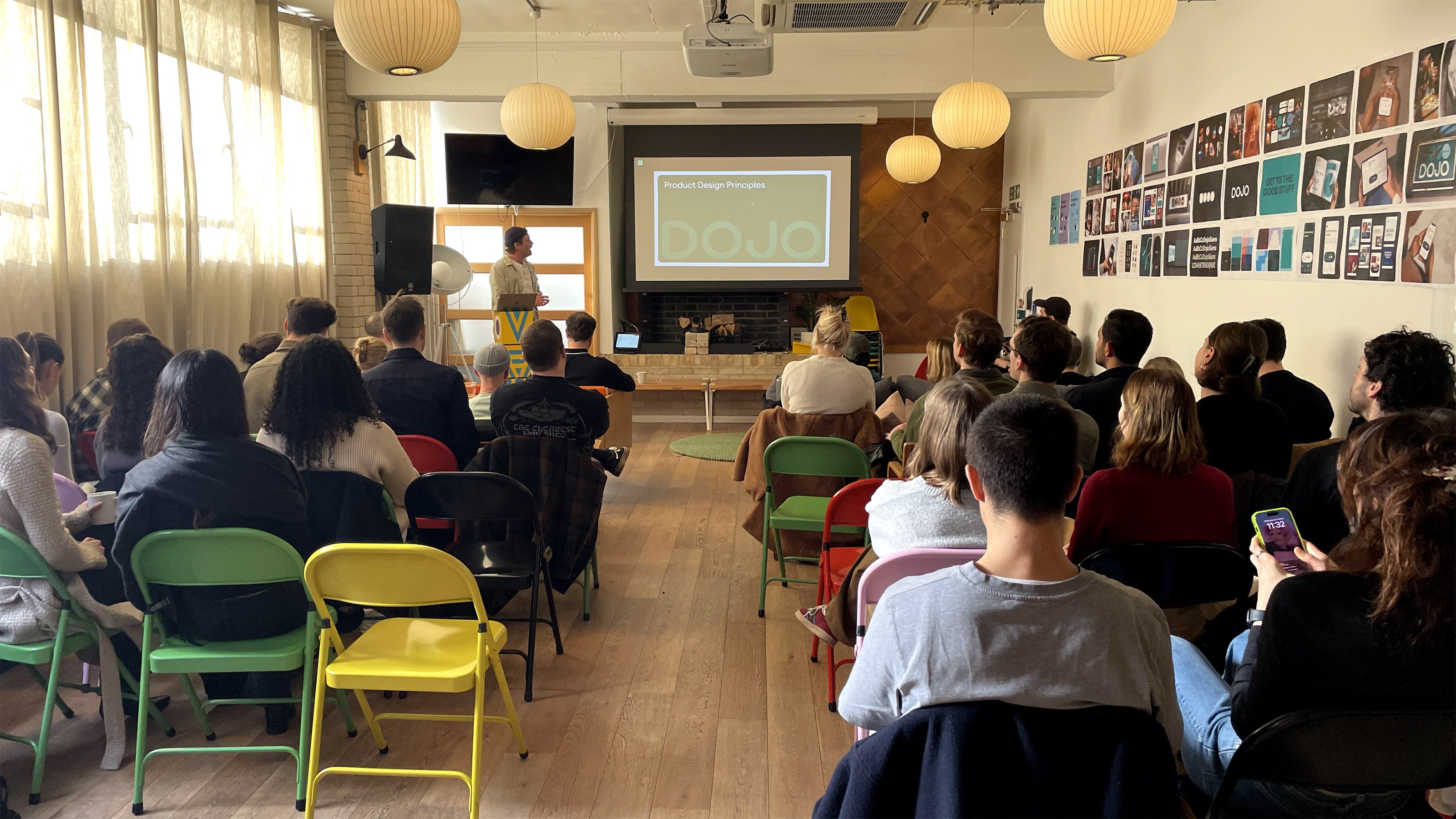
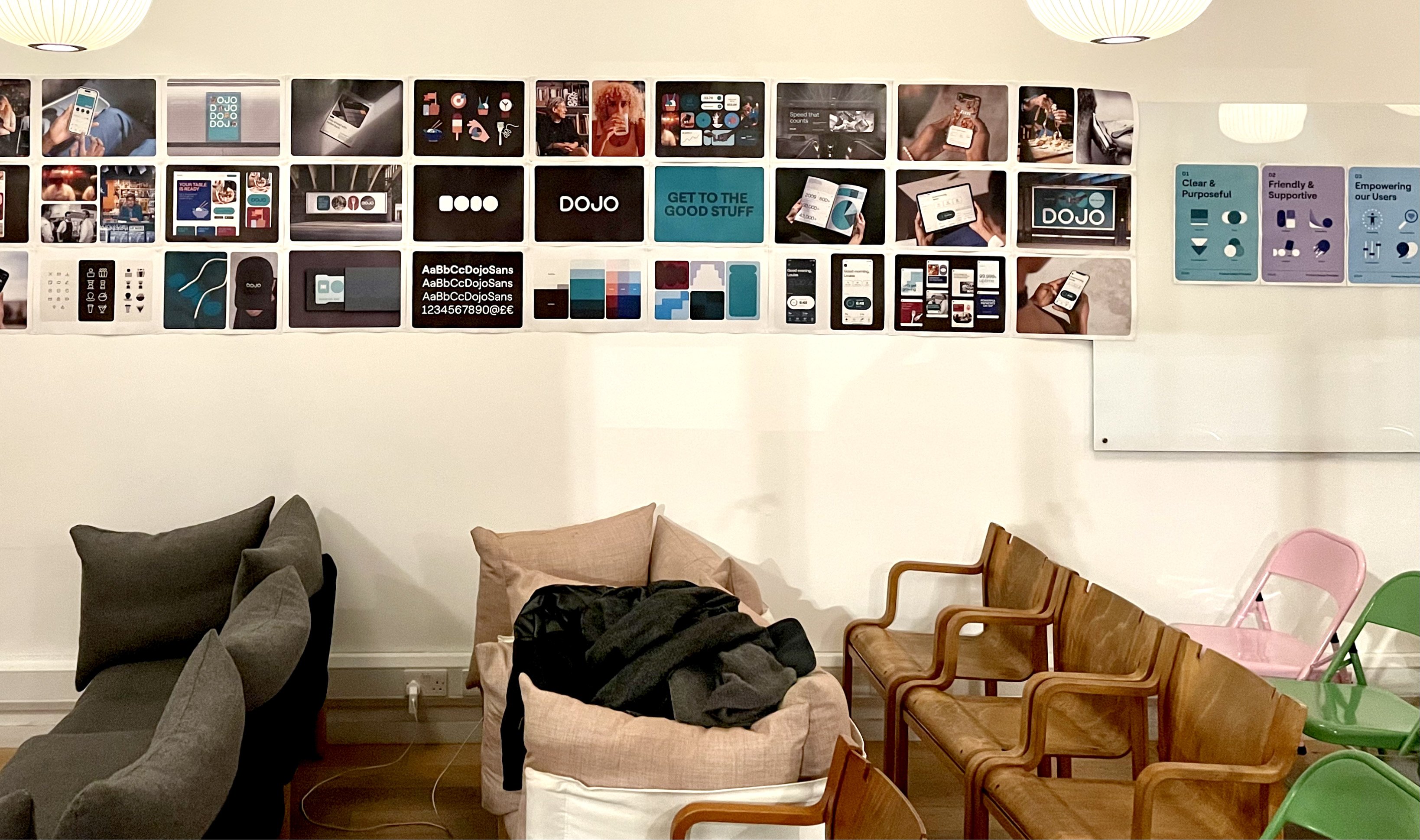
Beyond upskilling, we wanted to bring in a design culture of collective ownership, which we believe is the cornerstone of successful product cultures.
We put a clear progression framework into action and helped product and design employees see themselves as core contributors to Dojo’s success. In just three months design and product employee experiences scores rose significantly:
Design employee experience scores
- +59values of engagement
- +37inclusion
- +22accountability
- +22alignment
Product employee experience scores
- +18alignment
- +19inclusion
- +17growth and development
We also helped ensure future success across product and design by improving the recruitment process, resetting what ‘great’ looks like and hiring a strong permanent team, including a new VP of Design.
A rebrand with a product-focussed approach
ustwo brought in a high-quality group who quickly understood our current challenges and future ambitions and made a massive impact within a very short period of time.
Dojo already had a dynamic new verbal and visual brand identity lined up when we partnered with them, but they needed to put this plan into action to support its international expansion. Dojo saw a space for us to come in as champions of experience-led brands.
We needed to understand any blockers to the rebrand’s integration and what success would look like, so we began the boost by holding a discovery kick-off session with stakeholders.
We then teamed up with Dojo’s brand partner to create a UI design language that would work across the expanded product range.
ustwo ran customer desirability testing on the brand to ensure we were creating a brand which would fit the needs of Dojo’s widening target audience. We tested with four audience types: current UK Dojo business customers, prospective UK Dojo business customers, prospective European market Dojo business customers and consumer customers.
We found that in all audience groups, the new brand increased attraction, enjoyment and trust. This de-risked the brand and helped achieve alignment and sign-off, bringing the project over the finish line.
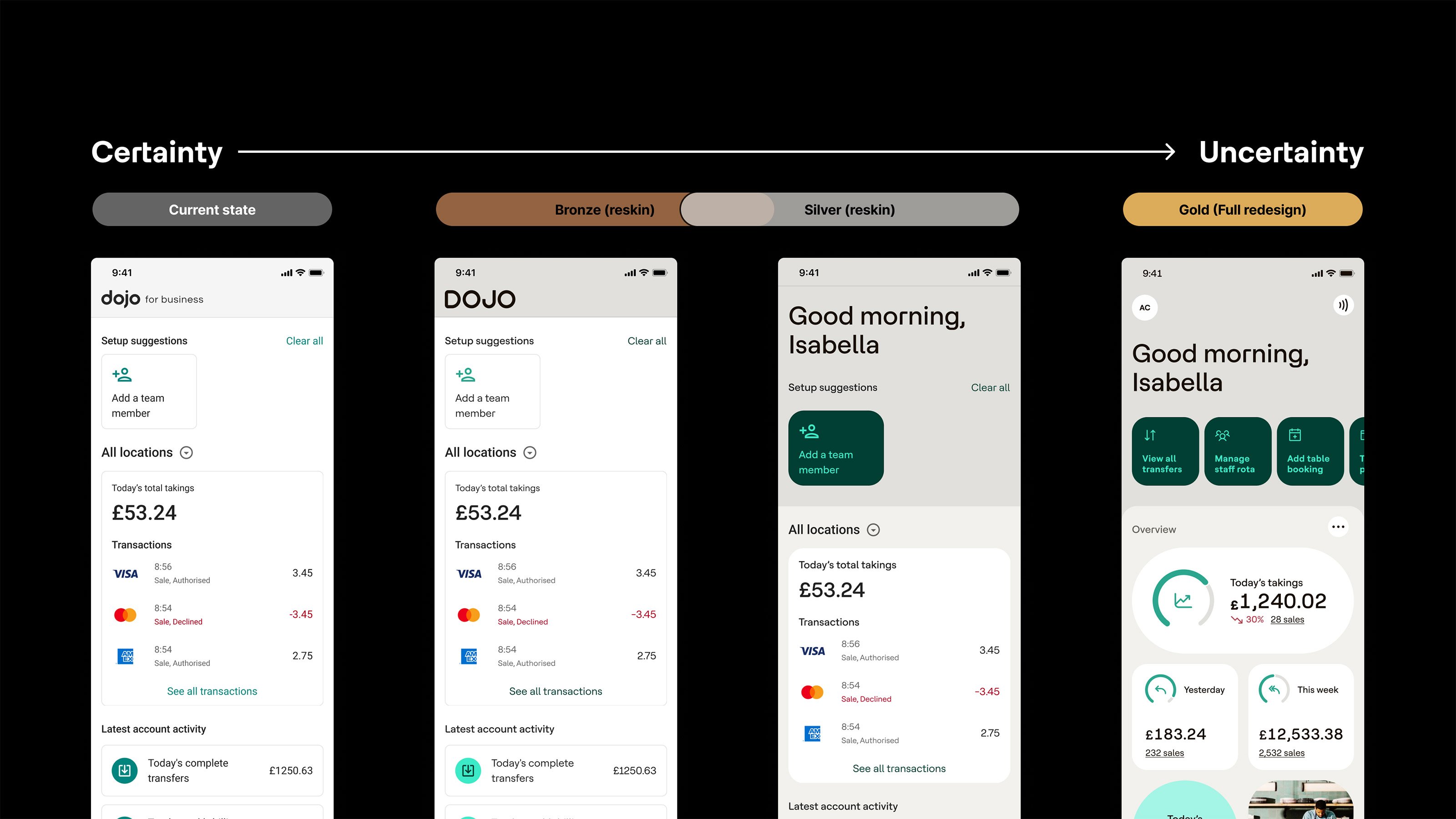
Rolling out a rebrand with product-centric principles
We led a plan for the rebrand rollout in tiers – bronze, silver, gold – to help each product team deliver a realistic slice of the brand alongside other priorities.
We coached teams in becoming more product- and user-centric by implementing continuous discovery, an agile and iterative approach to design research. This empowers Dojo designers to regularly roll out products and updates that bring the brand to life, delivering best-in-class design alongside a seamless, enjoyable journey for customers.
We grew a delivery mindset within the design process, encouraging a leaner approach, validating ideas through experimentation and realising value sooner and more often.
Setting up a design system for the future
Alongside the development of the new brand, we created Dojo’s first global design system. Like any strong product, we needed to build it around all of its users. We know impactful design systems need to be understood and useful for engineering product design teams, so we interviewed product designers and engineers across Dojo to deeply understand how these groups were currently working, their pain points and their needs.
“We’re finding ways to better collaborate across tribes.” - Dojo Designer
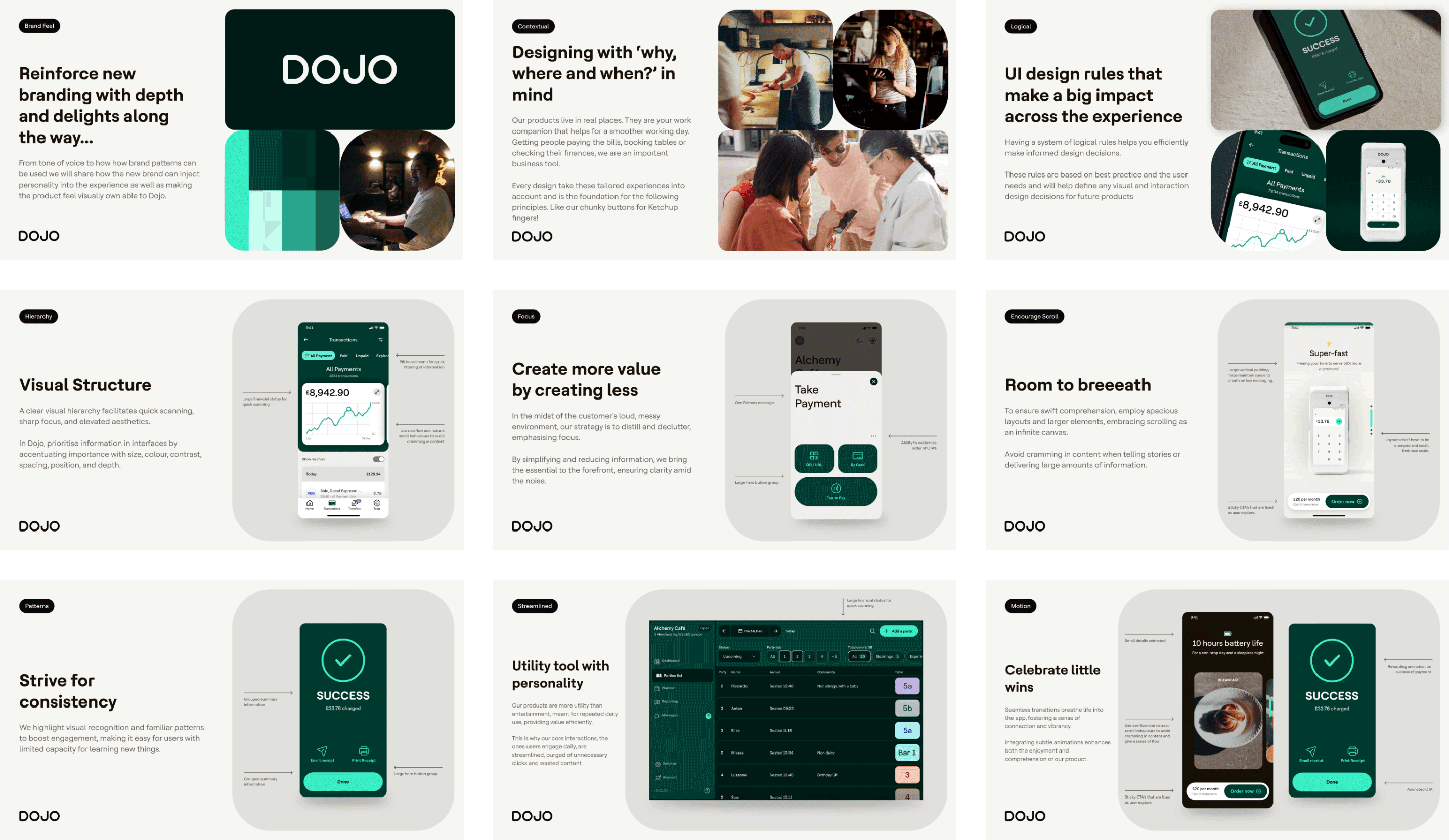
The new design system establishes consistency and reusability across Dojo’s entire product suite.
Using a semantic tokenised framework, we systematised the new brand language and created a governance and contribution model, which gives clarity on how product teams should interact with the design system. Ultimately, the system provides a coherent and scalable way to launch work to market – more growth, fewer pain points.
We felt truly welcomed by the entire team across Dojo, who were our real colleagues throughout the six months of this boost project.